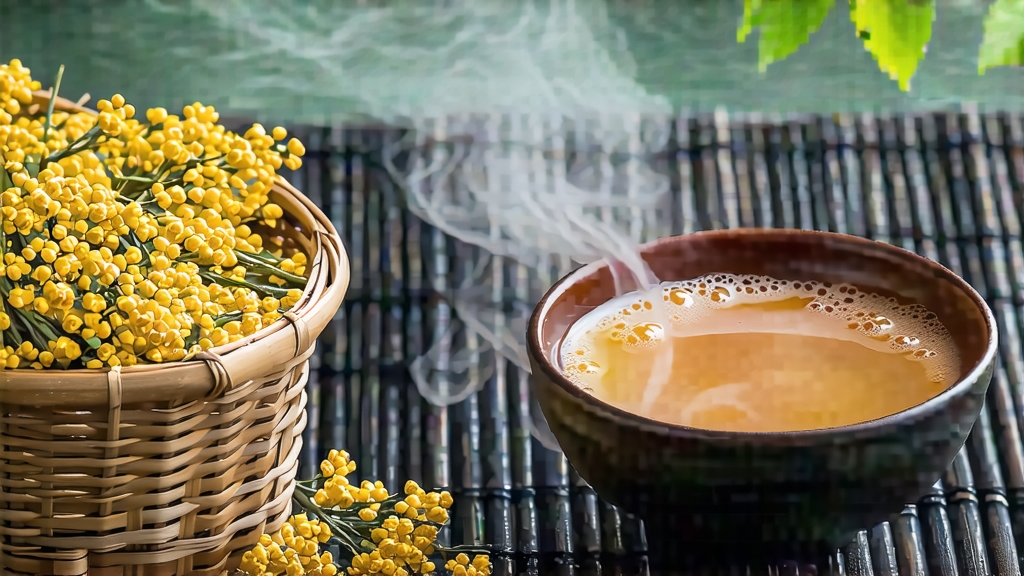
Tucked high in the mist-veiled Dabie Mountains of western Anhui Province, a tea once reserved for emperors still quietly resists the march of time. Huoshan Huangya—literally “Yellow Buds of Huoshan”—is the least-known member of China’s six great tea families, yet it carries inside its downy, sulfur-yellow leaves a full millennium of courtly intrigue, monastic discipline and mountain terroir. To understand it is to glimpse a China that measured seasons by the color of steam rising from a gaiwan, a China whose artisans were willing to spend thirty-six sleepless hours just to coax one extra shade of gold from a leaf.
History: from tribute to obscurity
The first written record appears in the Huoshan County Annals of 1044 CE, during the Northern Song dynasty, when local magistrates listed “huang cha” among goods sent to the capital in lieu of grain taxes. By the Ming dynasty the buds were so coveted that an imperial edict of 1526 designated the entire output of Taiyang township a “forbidden garden”; any commoner caught picking there risked beheading. Caravans of porters carried the tea through the Dabie passes, down the Yangtze and along the Grand Canal to Beijing, where eunuchs stored it in porcelain jars lined with lotus leaves. European texts ignored it entirely; even Robert Fortune, the Scottish plant-hunter who smuggled green tea seedlings to India in 1851, never mentioned the yellow variant. After the fall of the Qing, production lapsed for half a century until 1972, when a retired soldier named Li Weicheng rediscovered 1.2 mu of ancient bushes behind a Taoist monastery. Today only 180 hectares remain, scattered across four villages at altitudes between 600 and 800 m.
Terroir: why the mountain gives yellow
Huoshan sits at the climatic collision of north and south China: subtropical humidity rises from the Yangtze basin, meets cold air rolling off the Central Plains, and lingers as fog until noon 280 days a year. The cloud-filtered light forces the tea bush (a seed-propagated population of Camellia sinensis var. sinensis locally called “jiuye zhong”) to synthesize more theanine and less catechin, yielding a naturally sweet, low-astringency leaf. Soils are Phyllite-derived, slightly acidic (pH 5.2–5.6) and laced with selenium leached from ancient granite intrusions. Farmers insist the real secret is the night frost of late March, which shocks the plant into producing the pale, almost albino bud that turns sulfur-yellow during processing.
Harvest calendar: one bud, one standard
Plucking begins on the first day the night temperature stays above 5 °C, usually around Qingming (5 April). Only the “standard bud”—a single unopened tip weighing 0.12–0.15 g—is acceptable. Experienced pickers can gather just 400 g in a dawn shift; 35,000 buds are needed for one liang (50 g) of finished tea. Leaves must reach the village workshop within two hours, before surface moisture re-condenses and ruins the precise withering curve required for menhuang.
Craft: the lost art of “sealing yellow”
Yellow tea’s identity rests on a unique post-fixation step called menhuang (闷黄), variously translated as “sealing yellow” or “smother-yellow.” In Huoshan this is still done exactly as in 1580: the fixed buds are piled 8 cm deep in a cedar tray lined with wet hemp cloth, then slid into a charcoal-warmed earthen jar whose mouth is sealed with rice paper. Over the next 6–8 hours the leaf temperature hovers at 34–36 °C; chlorophyll degrades into pheophytin, polyphenols oxidize just enough to round the edges, and a honey-like aroma develops. The process is repeated twice more with gradually longer intervals, each time reducing moisture by 3 %. Finally the leaves are baked over a bamboo brazier at 60 °C for forty minutes, then rested for three days so the remaining water migrates from stem to leaf and evens out. The entire cycle takes 72 hours and demands that the master checks the pile every twenty minutes; one lapse produces sourness, the other flatness.